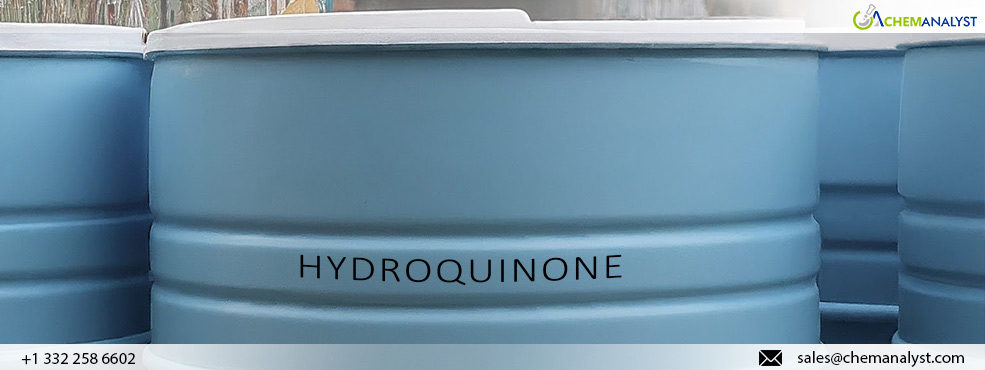Global Hydroquinone Market Braces for Price Surge in July 2024
- 12-Jul-2024 2:35 PM
- Journalist: Peter Schmidt
In a significant development that is set to impact multiple industries, the global Hydroquinone market is anticipating a substantial price increase in July 2024. Hydroquinone, a versatile aromatic organic compound with the chemical formula C6H4(OH)2, has long been a crucial component in various industrial applications. Its unique properties as a reducing agent, polymerization inhibitor, and antioxidant have made it indispensable in the production of numerous consumer and industrial goods. However, a confluence of factors is now driving up its market price, potentially disrupting supply chains and forcing manufacturers to reassess their production strategies.
Industry analysts point to several key drivers behind this anticipated price surge for Hydroquinone. Foremost among these is the rising cost of raw materials, particularly phenol, which serves as a primary precursor in Hydroquinone production. The United States, a major producer and exporter of Hydroquinone also experiencing increasing prices of its raw material phenol. This increase in prices has reported significantly higher domestic prices due to increased demand from downstream industries, especially the construction sector. This upward pressure on phenol prices is expected to cascade through the supply chain, directly impacting Hydroquinone production costs.
Furthermore, the global energy market continues to exert influence on chemical commodity prices. Recent reports from the U.S. Energy Information Administration (EIA) indicate a decrease in crude oil inventories, coupled with rising fuel stockpiles. This development, combined with OPEC+'s optimistic outlook on global oil demand for 2024, has led to bullish crude oil prices. As energy costs represent a significant portion of chemical manufacturing expenses, this trend is likely to contribute to the upward trajectory of Hydroquinone prices.
Seasonal factors are also playing a role in the anticipated Hydroquinone price increase. July marks the beginning of a new quarter, traditionally a time when market players in major exporting and producing regions ramp up production to replenish inventories with fresh stock. Simultaneously, importing regions often engage in bulk procurement during this period, further intensifying market demand and supporting robust market sentiments.
The monsoon season, coinciding with this period in many parts of the world, adds another layer of complexity to the market dynamics. Adverse weather conditions can potentially disrupt the supply of certain raw materials necessary for Hydroquinone production, leading to shortages and subsequent price hikes. Additionally, the chemical industry often schedules maintenance and regulatory inspections during this season, which can temporarily constrain supply and contribute to price volatility.
On the demand side, several industries that heavily rely on Hydroquinone are experiencing growth, further tightening the market. The cosmetics and dermatology sectors, in particular, are seeing increased demand for skin-lightening products, especially in Asian markets. This trend is expected to maintain strong demand for Hydroquinone throughout the summer months.
Industry experts caution that the anticipated price increase could have ripple effects across various sectors. Manufacturers of photographic chemicals, rubber antioxidants, and specialty polymers may need to adjust their pricing strategies or seek alternative formulations. Similarly, companies in the cosmetics and pharmaceutical industries might face pressure to absorb higher costs or pass them on to consumers.
While the full extent of the price increase remains to be seen, it is clear that the Hydroquinone market is entering a period of significant change. As July 2024 approaches, industry participants will be watching closely to see how these market dynamics unfold and what long-term implications they may have for this essential chemical compound.



